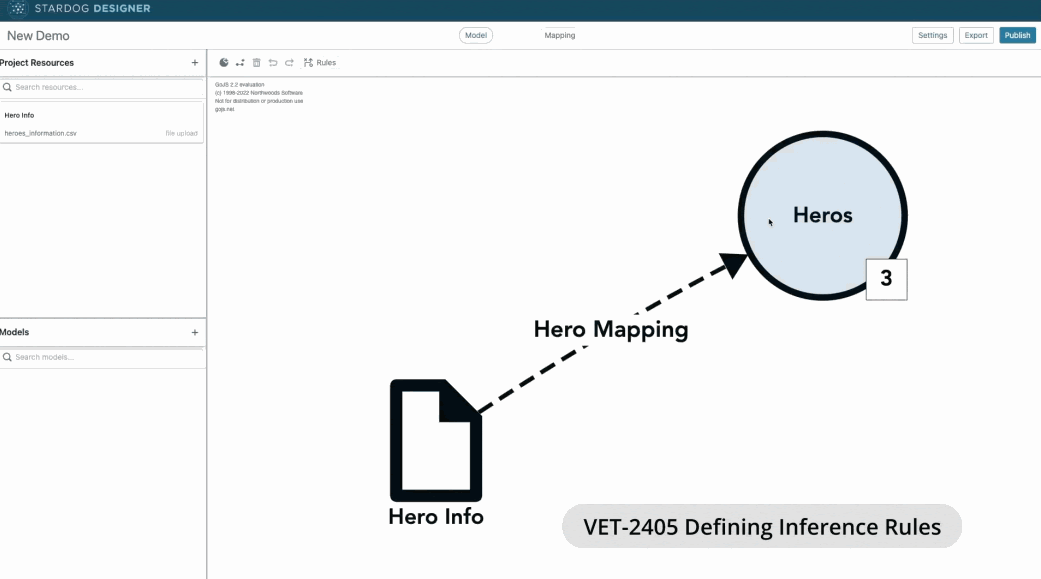Gartner Data and Analytics Summit Wrap Up - Knowledge Graph Emerges as the Secret Ingredient of a Data Fabric

Get the latest in your inbox

Get the latest in your inbox
Data and analytics teams are dealing with challenges across enterprise ecosystems from monetizing data, to fast-tracking AI, to managing privacy. Gartner has long touted Data Fabric as the tech architecture of choice to achieve these complex data and analytics goals, the topic having received over 3,000 inquires through Gartner over the past year alone.
Perhaps it should come as no surprise that at this year’s Gartner Data & Analytics (D&A) Summit, the “secret ingredient” to a modern Data Fabric was underscored as none other than a knowledge graph.
Beyond its role in Data Fabric, knowledge graph technology has been powering modern data and analytics data architectures in enterprise organizations, serving as a competitive advantage, for some time now.
So what is a knowledge graph, and why is it such a key piece to a “metadata-driven data orchestration” in an enterprise tech stack or Data Fabric? A knowledge graph is a semantic data layer that sits across your existing organizational data assets and connects them with meaning, allowing data consumers to easily search and discover related concepts that are not necessarily directly linked, thus wouldn’t be readily identified in a relational data format. Knowledge graphs have been a competitive advantage, kept mostly under wraps, across industries from Life Sciences to Finance to Manufacturing, and more.
The Gartner D&A Summit featured the emergence of knowledge graph from under the surface, revealing a key part of the digital transformation iceberg. As enterprises are completing composable data and analytics applications, including the trifecta builds of data storage / business intelligence (BI) tools / and data catalogs, they have come out realizing these pillars of data management require a semantic layer that both connects and ascribes business meaning to data—context that is relevant to data consumers and enables adaptive and intelligent decision making about the business. And as enterprises move to create proactive data solutions, data products, data monetization — and to overall future-proof their data for disruptive times — a flexible semantic data layer powered by a knowledge graph is breaking through the noise as the technology of choice to modernize data and analytics.
An enterprise knowledge graph connects data based on business meaning rather than storage location in order to democratize data access and insight to everyone in the organization, not just to the people with SQL and data notebook skills, all while protecting the integrity of the underlying data. This accelerates insights across an enterprise, closing the gap between data and decision.

Stardog’s Enterprise Knowledge Graph platform connects, maps, and models data based on business meaning rather than storage location. No-code interfaces help data consumers view inferences and apply business logic. Governance tools help IT manage security, privacy, and compliance.
By calling out knowledge graph specifically (vs. graph database), and underscoring business meaning as the driving force, Gartner may be signaling the key role semantic data layers will play in modern data and analytics architectures.
Historically, the term graph has referred to 2 different types of solutions:
Knowledge graphs are built on RDF for good reason. Knowledge is messy, and any given concept can mean different things to different people, carry layers of associations, and be connected to a multitude of other concepts. Given these complexities, capturing knowledge in a machine-readable format can be nearly impossible without the right tool. Knowledge graphs are purpose-built to achieve this goal.
This is why Stardog was built on RDF open standards, developed to represent large-scale information systems and noted for their expressiveness in capturing relationships. Data is linked rather than summarized in edge properties, allowing for multiple data definitions to serve different applications. In this way, RDF serves as a lingua franca over all the data, agnostically connecting data from various locations and formats and enabling powerful inference capabilities that promote discovery of relationships previously hidden, all without moving or changing the underlying data.
Here are some top differentiators of knowledge graphs:
A mature and hardened knowledge graph platform like Stardog provides all the functional benefits highlighted above, but is built to operate seamlessly within modern data architectures to support enterprise requirements like:
When we consider the importance of having a layer of abstraction between the data and the metadata, and how that can make the difference between finding a relationship between various data points, or missing it, consider how data is structured in different graph types.
As an example, “BWI” is an airport, but it’s also a train station. There might be a third use case where you don’t care about the distinction between the two and simply want to see both as transportation hubs.
In LPG, you have to index BWI as all three things. Each time you label it it’s another write to a separate index. There’s no hierarchy. You can’t say “all airports are transportation hubs.” You have to indicate that on every single airport. There’s no layer of abstraction between the data and metadata. While the data in LPG is a graph, the metadata is flat. In RDF (i.e., knowledge graph), inference allows the graph to interpret that both airports and train stations are types of transportation hubs via business logic.
Now replace “transportation hubs” in this exercise with your data. This powerful inference capability is how pharmaceuticals are getting through R+D faster, or manufacturers are proactively addressing supply chain issues in real time, and how banks are preventing fraud before it happens.
Knowledge graph is the secret ingredient in a modern data architecture because it’s purpose-built for the future of data and analytics, no matter how innovative or disruptive that comes to be.
Learn more about knowledge graphs:
How to Overcome a Major Enterprise Liability and Unleash Massive Potential
Download for free